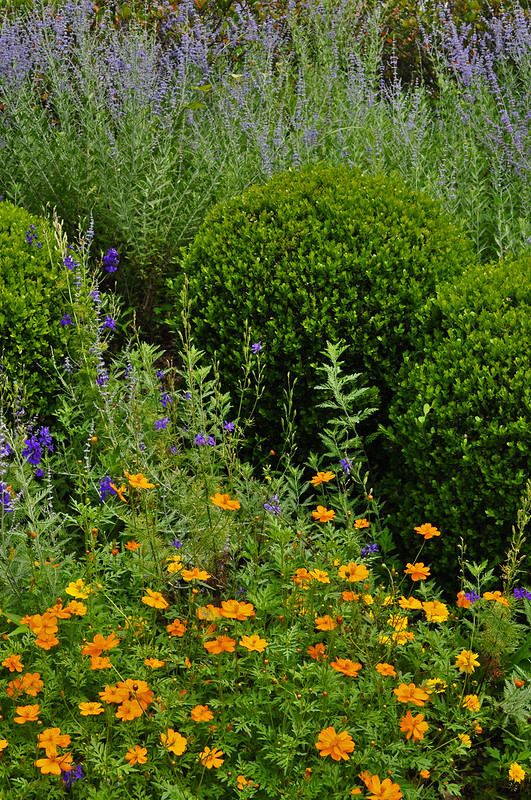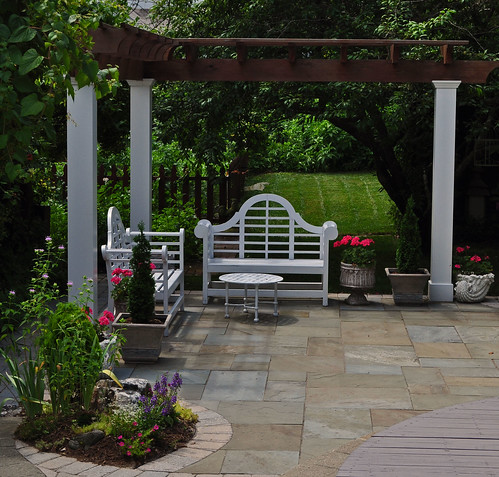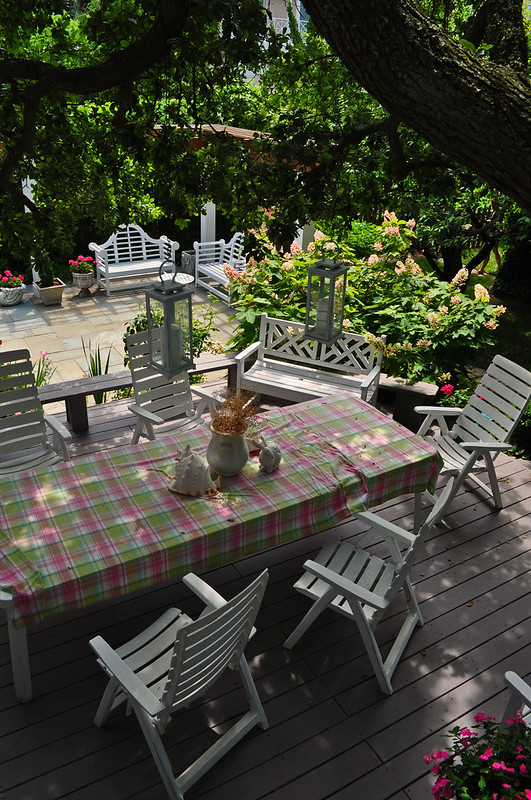This is the final post in my Private Garden Tour series, and I have saved the Campbell garden for last because it is my favorite. This in no way means the other gardens are something less, this just happens to be my personal favorite, but this one had an unfair advantage. One of my top favorite trees defines the back garden, and without them it would be an entirely different place.
The Campbell garden sits on a large lot, compared to its neighbors, and although it is not right on the ocean, it is close enough. The house itself is old by north end Virginia Beach standards and was built in the 1920's. The first thing I noticed when we pulled up was a twisted Japanese black pine that has as much character as the house does. The tree is surrounded by bluestone, boxwoods, self-seeding cosmos, Russian sage, ornamental grasses and larkspur. It is a great mix of restrained and wild, befitting the setting.





A walkway on the side led us through an arbor, into the back garden and to a series of sitting, dining and entertainment areas. Most of the back garden sits under a canopy of marvelous live oaks (the favorite tree of mine mentioned earlier). The Campbells apparently love these trees too, as they purchased the lot next door to ensure that nothing would happen to the live oaks. Some of the trees are growing on top of old sand dunes that somewhat form a small valley. A waterfall flows down from one of the dunes and feeds a koi-filled pond at the bottom of the valley. Decking from the back of the house was sensitively built and offers good views and access to what makes this garden special, the oaks.
Thank you for tagging along on the tour. If you want to see
Part I,
Part II or
Part III, just click on the hyper-link. If you would like to see the full set of photos, some of which I did not show in these posts, you can
visit my Flickr set. I would also like to thank Meg for organizing the tour and for suggesting it in the first place, my boss for making it happen, and I would especially like to thank all of the gardeners who graciously opened their homes to us.





































































